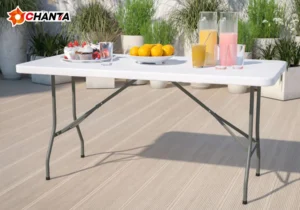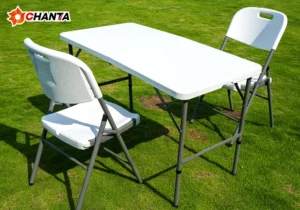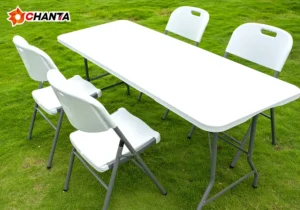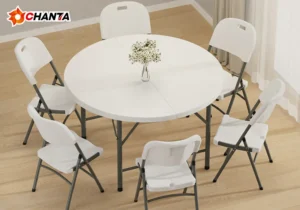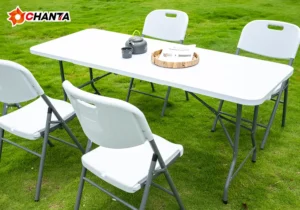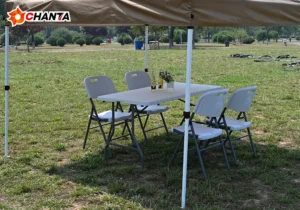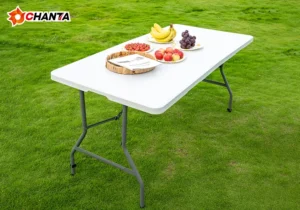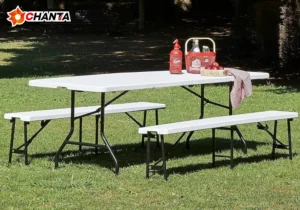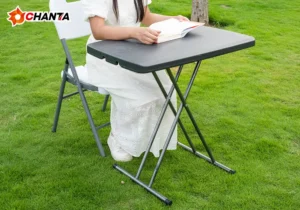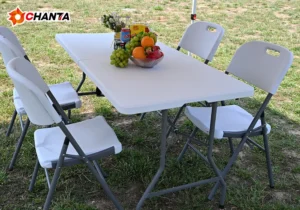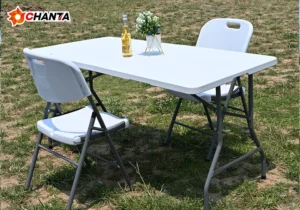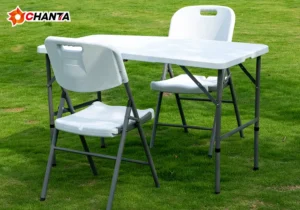Foldable tables, commonly found in homes, offices, events, and outdoor spaces, offer unmatched flexibility and space-saving advantages. But what are foldable tables called in different contexts? Understanding their proper names and classifications can help buyers make more informed decisions when shopping or searching online. In this article, we break down the terminology, explore their variations, and explain how to choose the right one for specific needs.
Understanding the Basic Terminology
Many people refer to foldable tables by a variety of names, depending on their shape, function, and design. Here are the most common terms used in the industry:
- Folding Table – The standard term used for tables with legs or surfaces that fold for compact storage.
- Collapsible Table – Another popular name, especially in commercial or event settings.
- Portable Table – This emphasizes the mobility feature and often overlaps with folding tables.
- Fold-Down Table – Used for wall-mounted or fixed options that fold flat when not in use.
- Drop-Leaf Table – A table with hinged sections that fold down from the sides.
- Extendable Folding Table – A hybrid design allowing both folding and expansion features.
While all of these terms describe tables that fold or collapse in some way, subtle differences make each one unique.
Different Types of Foldable Tables
Foldable tables vary by design, purpose, and materials. Here are the most recognized categories:
1. Bi-Fold and Multi-Fold Tables
Bi-fold tables fold once at the center, while multi-fold tables fold multiple times to reduce overall length. These designs offer compact storage and easy portability, often featuring built-in handles.
2. Wall-Mounted Folding Tables
Ideal for small spaces, wall-mounted tables fold flat against the wall. People often install them in laundry rooms, garages, or kitchen areas where permanent tables take up too much space.
3. Folding Dining Tables
These serve as full-sized dining tables that can be folded away when not needed. Many come with aesthetic finishes, making them suitable for formal settings.
4. Folding Work Tables
Workbenches or utility tables designed for DIY projects or industrial use also come in foldable versions. These include reinforced legs and durable tabletops to support heavier weights.
5. Camping and Picnic Folding Tables
Lightweight and weather-resistant, camping tables prioritize portability. Manufacturers often use aluminum or plastic materials for easier transport.
Common Materials Used in Foldable Tables
The table’s purpose often determines the choice of materials. Below are common materials found in foldable tables:
- Plastic Folding Table(HDPE or Polypropylene) – Lightweight, affordable, and easy to clean.
- Aluminum or Steel – Durable and ideal for outdoor or heavy-duty use.
- Wood or MDF (Medium-Density Fiberboard) – Used for aesthetic, indoor applications.
- Bamboo – Eco-friendly and stylish, popular for modern home interiors.
Each material offers unique benefits. Understanding these helps buyers choose the right table based on weight capacity, appearance, and durability.
Key Benefits of Foldable Tables
Folding tables deliver more than just convenience. They solve practical challenges across various environments. Here are their top advantages:
Space Efficiency
Foldable tables help maximize usable space, especially in apartments, classrooms, and conference rooms. You can set them up when needed and store them when not in use.
Portability
Their lightweight design and folding mechanisms allow easy transport. Event organizers, vendors, and travelers especially benefit from this feature.
Versatility
One folding table can serve multiple functions. Use it as a dining table, work desk, card table, or even a display unit at trade shows.
Cost-Effectiveness
Compared to built-in furniture or permanent installations, foldable tables often cost less. Their durability also extends their value over time.
Where to Use Foldable Tables
Foldable tables appear in more places than you might expect. Below are some of the most common use cases:
- Home – As extra dining space, study desks, or ironing stations.
- Office – For meetings, break rooms, or temporary workspaces.
- Events – Perfect for catering, banquets, or registration desks.
- Outdoor – Ideal for camping, BBQs, or tailgating.
- Educational Settings – Schools and universities use them for testing or lectures.
Each environment calls for a different size, material, or folding style. Knowing your primary use case helps streamline the selection process.
Choosing the Right Foldable Table
When shopping for a foldable table, focus on more than just size and price. Consider the following criteria:
- Weight Capacity – Ensure it can hold the intended load without sagging.
- Foldability – Check how compact it becomes when folded.
- Ease of Setup – Look for models that assemble and disassemble quickly.
- Storage Space – Measure the storage area to ensure the table fits when folded.
- Style and Finish – Match the table’s look with your existing furniture or theme.
Reading reviews and verifying specifications helps ensure you invest in a product that meets expectations.
Final Thoughts
Foldable tables, often known by names like folding tables, collapsible tables, or drop-leaf tables, remain indispensable in modern living. Whether you need one for your next backyard party, a pop-up shop, or simply a small apartment, these tables provide reliable functionality without compromising on space.
By understanding what foldable tables are called and the variations available, you can make smarter buying decisions and enjoy the full range of benefits they offer.


